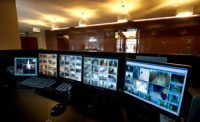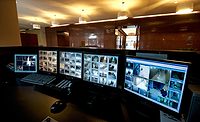If you walk into most command centers, the first thing you’ll see at the front of the room is a video wall outfitted with an array of monitors. These dedicated physical spaces such as NOCs, SOCs, etc, collectively referred to as command centers, can play a critical role in an organization’s risk management and response efforts while supporting many operational functions like security and business continuity. In an effort to enhance situational awareness in the command center, these wall monitors are often displaying TV news, weather broadcasts and even daytime TV.
These video walls are intended to provide the command center, an organization’s nerve center, with real-time access to mission-critical information, so what value are TV broadcasts bringing?
Here are the top six reasons why airing TV in your command center is doing more harm than good:
1. News no longer breaks on TV.
When reporters and even eyewitnesses see a major story unfolding, more often than not the first place they turn is Twitter.
If you are relying on TV news for the latest story, you may find yourself getting information hours behind Twitter and other social media platforms. And, if you are concerned with smaller markets – rural areas that do not get the level of TV news coverage that a major city does – it may take days for a big story to gain national attention.
Last year’s Ebola outbreak, for example, was posted about on Twitter days before an official announcement of the first probable case, according to a new study from American Journal of Infection Control. This study has shown that mining Twitter could be beneficial to inform public health efforts, and command center operators tasked with keeping travelers in the region safe can realize the same benefits.
2. Out of a 24-hour news cycle, only a small fraction is relevant to your organization.
CNN, MSNBC, FOX and the other 24/7 news networks have a lot of time to fill. From the latest entertainment news, important health trends and the latest viral videos, there’s a lot of content that is not relevant to the work being done in your command center.
3. The priorities of the news channels are not the priorities of your organization.
The other problem is that the priorities of CNN, Al Jazeera and the like are not the priorities the command center team, so the news is often irrelevant to the work in the command center. TV news is chasing the latest story, not catering to the intelligence needs of your organization. Even if a news story is relevant, CNN will quickly switch to the next story, leaving the command center staff to spend valuable time searching out more information on their own.
4. And if the news happens to be relevant, it can’t be queried.
If an operator happens to catch a relevant story through the news, they are left trying to chase the story for more information: What is the incident; who or what is affected; how severe is it? Often this results in critical time spent searching the Internet for more information or waiting for news organizations to catch up to the story.
5. TV news playing on command center monitors is just plain noisy.
The hum of the command center can be noisy enough without the added noise of TV news. Even with the audio off, news is visual noise. Sidebars, crawlers on the bottom and graphics designed to be interruptive and eye-catching are likely not bringing any valuable information to your operators.
This failing actually leaves operators and analysts more likely to miss important risk events – as they are distracted by the latest celebrity gossip or harrowing car chase – resulting in lost time scrambling when an event is missed.
6. You can do better.
TV news may have been your best command center option in the past, but improvements in enterprise risk visualization technology give organizations much more relevant content that is more valuable for their command center. These new innovations deliver tailored information relevant to your organization, based on office, employee and other critical asset locations as well as mobile asset tracking like travelers and inbound and outbound shipments. This helps to reduce the hours spent wading through data, allowing operators and analysts to focus on more important matters.



